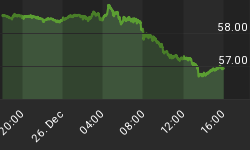The world is headed for an economic slowdown, according to the Economic Cycle Research Institute's (ECRI) Long Leading Index of global industrial growth. Lakshman Achuthan, founder and managing director of the research center, said the US economy will not escape the downturn, but will "participate in it ... and in one way, shape or form, it is going to impact this recovery." (Click here for an interview with Achuthan.)
I agree with him, as the ECRI Weekly Leading Index (WLI) smoothed annualized growth rate is rolling over, while the year-on-year growth of the Conference Board's index of leading economic indicators continues to drift south.

Sources: Dismal Scientist; I-Net Bridge; Plexus Asset Management.
The question is to what extent, though.
The Conference Board's index of leading indicators leads industrial production by approximately three months, but year-on-year growth of the Leading Indicators Index over the past three months indicates that year-on-year growth in industrial production of about 5% to July is already in the bag.

Sources: Dismal Scientist; I-Net Bridge; Plexus Asset Management.
The growth rate of the ECRI WLI also points to a slowdown, but it is very difficult to ascertain to what extent.

Sources: Dismal Scientist; I-Net Bridge; Plexus Asset Management.
I have argued all along that the US financial markets (bonds, stocks and metal prices) and labor are perhaps the largest components of the ECRI WLI. The success of the ECRI WLI as a leading index of the US economy therefore means that the market is quite successful in anticipating the state and prospects of the underlying economy. However, there are times when the market overreacts, only to return to normality afterwards. Examples are the last quarter of 2009 and the third quarter of last year - yes, the latter had many commentators calling for a double-dip recession!

Sources: Dismal Scientist; ISM; Plexus Asset Management.
To me the most important indicator of the short-term outlook for the US economy is my ISM GDP-weighted composite PMI (manufacturing and non-manufacturing), which also leads industrial production by approximately three months. Although the composite PMI has weakened somewhat over the past three months, it still indicates that year-on-year industrial production growth is likely to be maintained at approximately 5% until the end of July.

Sources: Dismal Scientist; ISM; Plexus Asset Management.
At this juncture, I would prefer not to make forecasts beyond July this year and will rather focus on what the markets will be telling me through the ECRI WLI and my ISM composite PMI.
Did you enjoy this post? If so, click here to subscribe to updates to Investment Postcards from Cape Town by e-mail.
















